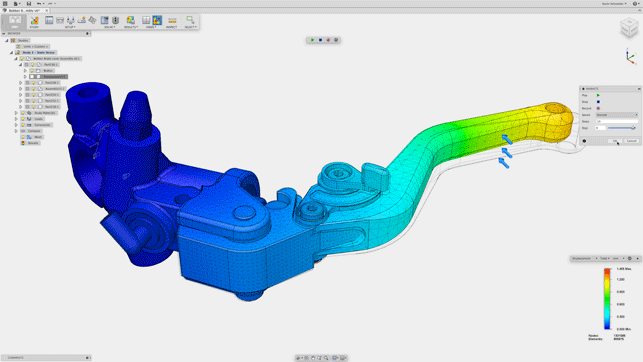With his lad off to secondary school and soon to be studying Product Design, Al Dean has been feeling nostalgic. And older.
If you’re a parent with kids of a certain age, I’m sure you’ve been through the same set of emotions that I have in the last few weeks. My wee lad Jack is getting ready to head to secondary school and I suspect I’m more nervous about the whole thing than he is. Like many kids today, he seems to take change in his stride. Or maybe he’s just better at it than his old man.

Eliminate the gap between design and analysis – An MSC ad from NASA Tech Brief, June 1993
Of course, we’ve already done a tour of the school. To be honest, it look amazing and, when I compare it to my own secondary school the teachers seem younger, more enthusiastic and the whole thing feels far less daunting.
We also got a look at the First Year timetable. Once I’d got over a sympathy pang over double PE followed by double History on the first day, I bet you can guess which subject I looked for next. Yup – there it was. Wednesday mornings. Product Design.
Having previously wandered around the department, I was amazed at the kit schools have on offer these days — laser cutters, little CNCs, a 3D printer — all manner of stuff. For kids with an interest in making, now is a great time to be alive.
I thought about this, and about the wealth of technology we have in the magazine each month and started to think back to how things have changed since I first started using CAD in 1993. That wasn’t at school. I think I got one hour on an Acorn during my whole time at school).
No, this was at university, where I was using AutoCAD 11, on DOS. I’m sure many of you remember those days. Progressing to MSC’s Aries and AutoCAD 13 on Unix boxes. Installing a knock-off version of 3D Studio, from a set of a billion disks. Later, getting to grips with Pro/Engineer (Done, Done, Done) and some Alias.
Out of all of those packages, Aries was, in hindsight, the most interesting. At the time, of course, I had absolutely no idea about the genesis of this system.
Today, that sort of information is only ever a quick Google search away — and it turns out that MSC/Aries was the result of the 1993 acquisition by MSC (then known as MacNeal-Schwendler Corporation) of Aries Technology.
What I also discovered, during one of those Google sessions where you get sucked into the details, was how this deal was pitched at the time.
An advert in a copy of NASA’s Tech Briefs publication, which appeared shortly after the acquisition, summed it up (And you can see the advert in one of NASA’s archived publications here as a PDF – it’s on page 14)
Under the headline — “Eliminate the gap between design and analysis” — it states: “For the first time, both designers and analysts can work in the same solid-modelling-based environment, under one intuitive user interface, to rapidly create, analyse and optimise designs before expensive physical prototyping.”
Then it struck me: Nearly 25 years on, we’re still chasing the same goal. Take a look at our Fusion 360 review. It features pretty much the same set of tools that Aries had over a quarter of a century ago. The results (in terms of physics) are going to be the same, the workflow is the same and the benefits are the same. So what’s changed?
The answer is pretty much down to cash. Aries wasn’t cheap and the hardware that it ran on most certainly wasn’t. I bet you wouldn’t have got much change out of $40,000 or more for the Sun UltraSparc rig and software I used to use.
Yes, the user interface for Fusion 360 is more slick, but the real difference is cost. Fusion will run perfectly well on a computer that costs $1,000. The software itself, meanwhile, costs a paltry $300 a year. And I realise that I’m grossly simplifying things here.

The Fusion 360 interface
Then I was brought back to thinking about Jack heading off for his adventures in education and started to think about what the end results would be if he wrote this same article at my age.
Would it be full of fun-poking references to our use of keyboards and mice and the crappiness of early VR headsets or rudimentary 3D printers? Would he laugh at single-material 3D printers, when to us they seem to materialise parts from thin air and magic like in Star Trek?
Or would he be digging out Fusion 360 adverts from the Internet and, like me, thinking that nothing much has really changed. I’d like to think it would be the former, but I’ve a sneaky suspicion that it would more than likely be the latter.
The answer is, as with all things in the future, unknown. But I can tell you this: I’m still glad I haven’t got double history after double PE on a Monday morning.

How do modern design systems compare with those we once used?
Default






